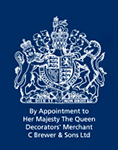Problem Solver - Salts
Problem
Normally excess mineral salts within the brick or masonry peculating to the surface if painted can cause extensive paint failure or salt deposits on the surface
Stages
Stage 1 - Preparation
Dry brush the surface down using a stiff bristle brush to remove any loose materials
If any mould or mildew is apparent, treat with a suitable fungicidal solution, rinse again with clean water and allow to dry.
Remove salt deposits from the surface.
If painted, check for cracks or areas of defective masonry and make good.
Stage 2 - Basecoat
Once the surface is clean and all loose material has been removed, treat with an Alkali Resisting Primer or suitable plaster primer and allow to dry.
Stage 3 - Topcoat
Apply two coats of a suitable topcoat.
Problem
Normally excess mineral salts within the brick or masonry peculating to the surface if painted can cause extensive paint failure or salt deposits on the surface
Stages
Stage 1 - Preparation
Dry brush the surface down using a stiff bristle brush to remove any loose materials
If any mould or mildew is apparent, treat with a suitable fungicidal solution, rinse again with clean water and allow to dry.
Remove salt deposits from the surface.
If painted, check for cracks or areas of blown render where water could penetrate such as behind down pipes and gutters and make good.
Stage 2 - Basecoat
Once the surface is clean and all loose material has been removed, treat with an Alkali Resisting Primer or suitable plaster primer and allow to dry.
Stage 3 - Topcoat
Apply two coats a suitable topcoat.



